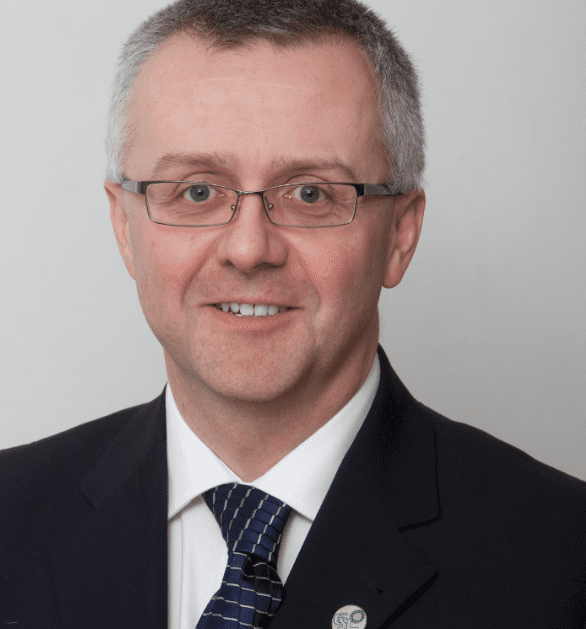One of the fastest growth markets in dentistry is orthodontics, and for good reason: an apparently insatiable demand among adults for straight teeth on top of steady demand among children and teens.
Adults have to go private, there’s no other option in England and Wales, and they often want whitening and ugly metal fillings replaced at the same time. When GDPs expand their repertoire to learn orthodontics, therefore, they get a double revenue boost: one from the new treatment modality and another from the opportunities for more efficient interdisciplinary treatment planning it creates.
It’s an exciting time to enter this market because digital technology is changing the cost base and the patient journey. We asked Ian Hutchinson, former Chairman of the British Lingual Orthodontic Society, Specialist Orthodontist and Clinical Director of Wired Orthodontics, for some advice for GDPs.
(Wired scooped Best Orthodontic Laboratory at the Laboratory Awards in London last week and was highly commended for Most Innovative Laboratory, which it won in 2013 and 2017.)
Ian, how is digital changing orthodontics?
The reluctance of many dental clinicians to embrace the digital revolution may result in them being on the back foot, trying to play catch up both in implementing digital technology but also recapturing lost market share as patients are not only wowed by the whole process but also receive faster, better treatment. Digital work is changing orthodontics and the wider dental world in the following ways:
The best must use digital. The best orthodontist used to be the best wire bender, then Larry Andrews came along in the 70s with the straight wire system so it was those with the best eyes because bracket positioning was paramount. Now the best orthodontist will be from the PlayStation generation because the decrease in need for excellent manual dexterity, the automation of treatment planning and the use of CAD CAM and robots means there is an ever increasing reliance on technology skins for the smooth running of the office and successful patient treatment.
Improved patient communication and management of patient expectations. We can now show patients how the teeth will move and give them simulated outcomes. We don’t necessarily need scanners, quality digital photography and Keynote or PowerPoint can help (our Integrated Smile Design course is a good place to start). However, if we have digital intra oral scans we can fabricate snap on smiles for the client to take home to gain approval from their partner and friends as often these smile transformations can be a substantial investment.
Safer treatment. Remember the 10,000 hours rule? Few dentists working in small clinics in remote areas will reach the sheer numbers it takes to become an expert when they take on a new treatment modality. Yet patients still want treatment and may be unable to travel elsewhere. With digital technology it’s easy to provide a remote mentoring and monitoring service to clinicians to specialist level, like we do via the Wired Lab, thus helping ensure patient safety and also enhancing clinician knowledge and experience.
Shorter orthodontic treatment. We can’t make teeth move faster due to biological limitations, however with digital technology we can shorten the overall treatment length thanks to more accurate bracket positioning. The proposed digital outcome can be reached in fewer appointments as we don’t need to reposition brackets or bend wires.
Multidisciplinary treatment becomes interdisciplinary treatment. In this day and age many patients need more than one speciality to reach their goal. With multi-disciplinary treatment often the clinician at the time does what they think is best. However, this may compromise the outcome of the other clinicians’ work. Digital technology allows for ease of communication and predetermined outcomes so we can monitor each step of treatment easily and provide specific, measurable outcomes for the treating clinician before the patient progresses to the next stage. As this will be cloud based there is no worry about communication — removing the single biggest problem: the illusion it has taken place (in George Bernard Shaw’s words).
Blended orthodontic treatment. Digital technology not only creates shorter timeframes as it processes the bulk of work undertaken with fixed appliances and the fine detailing with aligners, it creates a smoother transition for patients: restorative treatments can be provided in seamless software integration.
Running of the office / practice. Practice management systems are becoming cloud bases and integration of the PMS and accounting software means it’s so much easier to access reports at the touch of a button.
Storage of clinical records. Gone are the days of lofts crammed with study models, the shear weight of which bends the roof rafters…
In-house printer. Having an in-house 3D printer means patients can receive their retainers the very same day, ensuring there’s no post appliance movement. In the future I can foresee clinics having their own wire bending robot.
The future. AI is coming, and automated treatment plans on learnt algorithms mean safer treatment. Researchers have been working on AI for decades. Progress has accelerated over the past few years thanks in large part to three developments: the increased availability of data; growing cloud computing power; and more powerful algorithms. More data than ever before is available for computers to learn from and computers are very good at remembering things. They are very good at probabilistic reasoning, something many people are not so good at. With these capabilities, computers can help us make better decisions. They are now unassailable in games like chess and in a recent example in medicine researchers in California demonstrated that an AI algorithm could diagnose Alzheimer’s patients with 100% accuracy on average six years ahead of human doctors, who had an accuracy of 57%.

